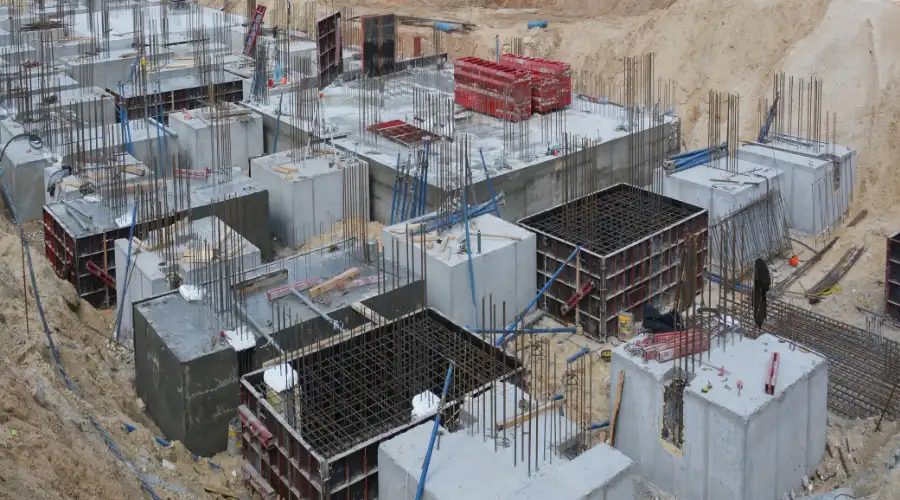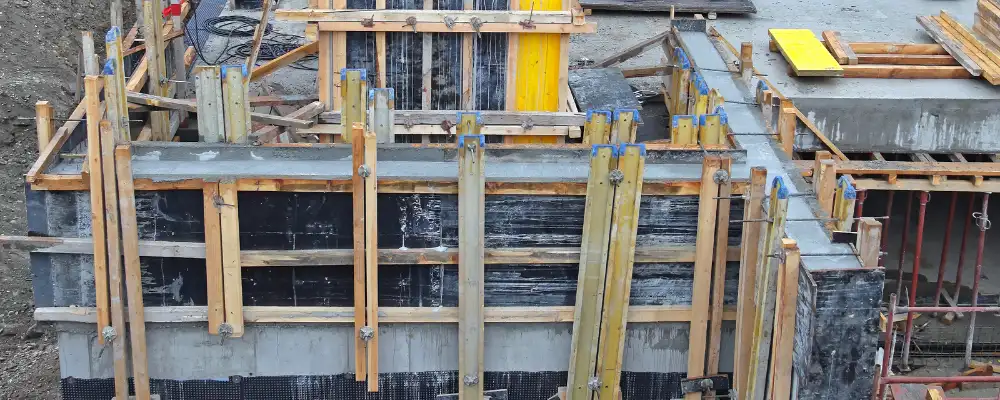Pedestal pads exist below large columns to evenly distribute the weight onto the soil, preventing excessive load from settling deeper than necessary. They are trusted for heavy applications in homes, apartment towers, and even bigger structures like warehouses. They provide buildings with a good supporting surface, ensuring level floors and safety for years. The design and pouring of pedestal slabs must follow specific criteria. These criteria help avert cracking, settling, and worse failures. For planners, building teams, and constructors, it is important to know pedestal foundations.
What is a Pedestal Foundation?
A pedestal foundation is a structural member, generally short and vertical, located between a column and its footing. The purpose of a pedestal foundation is to distribute the load from a superstructure effectively throughout a footing to increase the overall support level and stability of the entire building or structure. Pedestals are generally wider than they are tall and can be made of concrete, stone, steel, or brick.
Types of Pedestal Foundations

Pedestals can typically be classified as follows:
Plain Concrete Pedestals
Plain Cement Concrete (PCC) pedestals are simple pedestals used under light-frame panels and small concrete columns, provided that the height of the pedestal is less than three times its width. The block is cast with no blends, only plain concrete directly from the mixer, and is not reinforced (no rebar or mesh, etc.). Plain pedestals require little time to execute, making them very inexpensive. However, without any reinforcement, these units cannot carry heavy loads. They are found under low-rise homes, garden sheds, and where solid soil is expected to produce only relatively modest upward forces.
Reinforced Concrete Pedestals
Steel reinforced concrete pedestals with steel bars or steel mesh provides much greater strength and longevity than unreinforced pedestals. The steel bears the tensile forces and prevents the concrete from cracking or bending when subjected to large loads. Reinforced pedestals are required when the height of the pedestal is greater than three times the width. They are used in multi-storey facilities, bridges, or where heavy machinery is located. These pedestals have greater load capacity and help to dampen wind loads from high gusts or earthquake impulses.
Precast Concrete Pedestals
Precast pedestals are factory-cured concrete blocks, delivered cured and ready for installation. The pedestals are shipped and placed on leveled footings with a crane. Using precast pedestals in a project saves time and labour compared to casting concrete on-site. Precast pedestals have consistent strength, uniform precision, and appearance. They are ideal for projects with repetitive designs, such as factories and bridge decks, where construction time can be saved with precast components.
Metal Pedestals
Metal pedestals, typically crafted from materials like steel or aluminum, are ideal for lightweight structures that require enhanced strength and durability. These pedestals are widely used in industrial environments, mechanical systems, and construction projects where providing solid support is essential without adding unnecessary weight. They are frequently employed to support machinery platforms and mechanical equipment, offering reliable stability in situations where strength is crucial without being overly cumbersome.
Stone Pedestals
Stone pedestals are predominantly used in the construction of historical buildings, monuments, or statues, where both structural integrity and visual appeal are equally important. Known for their durability, stone pedestals can endure harsh weather conditions and the passage of time. In these contexts, pedestals not only provide necessary support but also serve as a key design element, contributing to the overall aesthetic of the structure.
Key Functions of Pedestals in Construction
- Increasing Durability: Pedestals elevate columns above ground moisture, preventing corrosion and enhancing structural durability.
- Avoiding Punching Failure: They distribute heavy loads between the column and footing, preventing punching failure in concrete columns.
- Providing Support: Pedestals provide additional support by evenly distributing the applied load, stabilising the structure, and preventing uneven settling.
- Aesthetic Purposes: Pedestals are commonly used architecturally to create elevated platforms or enhance visual appeal as decorative elements.
- Provide Protection: They elevate columns above moisture, distribute loads, prevent frost heave, provide clearance for utilities, and protect against vehicular impact.
- Save Resources: Pedestals reduce concrete volume, minimise excavation, simplify column alignment, and offer structural and economic benefits, making the construction process more cost-effective.
Common Applications of Pedestal Foundations
Pedestal foundations are useful in many types of foundation in construction.
- In building and commercial construction: They act as strong bases for apartments, office towers, and other forms of mid-rise and high-rise blocks.
- In Bridges and Flyovers: They are reliable foundations for structural pier bases and end abutments.
- In Industrial Construction: They act like solid pads for heavy-duty machines, storage tanks, and plant equipment.
- In Architectural Features: They serve as stable plinths for works of art, signs, and prominent sculptures.
- Utility Construction: They function as robust pads for poles, transmission towers, and street lighting.
Step-by-Step Construction Process for a Pedestal Foundation
1. Site Preparation and Excavation: Mark the layout of the footings and excavate the desired depth for the footings.
2. Footing Construction: Level and place the footing base, then pour a reinforced concrete shoe (spread footing).
3. Formwork construction/Awaiting concrete: Assemble formwork for the base of the pedestal shaft and check for alignment, carpentry, and finished dimensions.
4. Reinforcement placement: Place reinforcing steel bars, ties, and dowels according to the design.
5. Pouring concrete: Pour concrete into the base of the pedestal shaft. Properly vibrate, compact, and remove air voids.
6. Concrete curing: Allow sufficient curing time for the concrete to achieve the specified strength.
7. Formwork is to be stripped after an adequate curing time, then finished as required.
8. Installation of columns or equipment: Install the column or base of equipment on top of the pedestal. Connect the top with dowels or anchor bolts as specified.
Conclusion
In structural engineering, pedestal foundations are essential to allowing the safe, controlled transfer of concentrated loads to the ground. Their flexibility in design, cost-effectiveness, and construction simplicity make them a requirement to use in virtually any construction application, from residential to commercial and industrial. Their proper design, materials selection, and construction practices are critical for long-lasting performance and safety.

